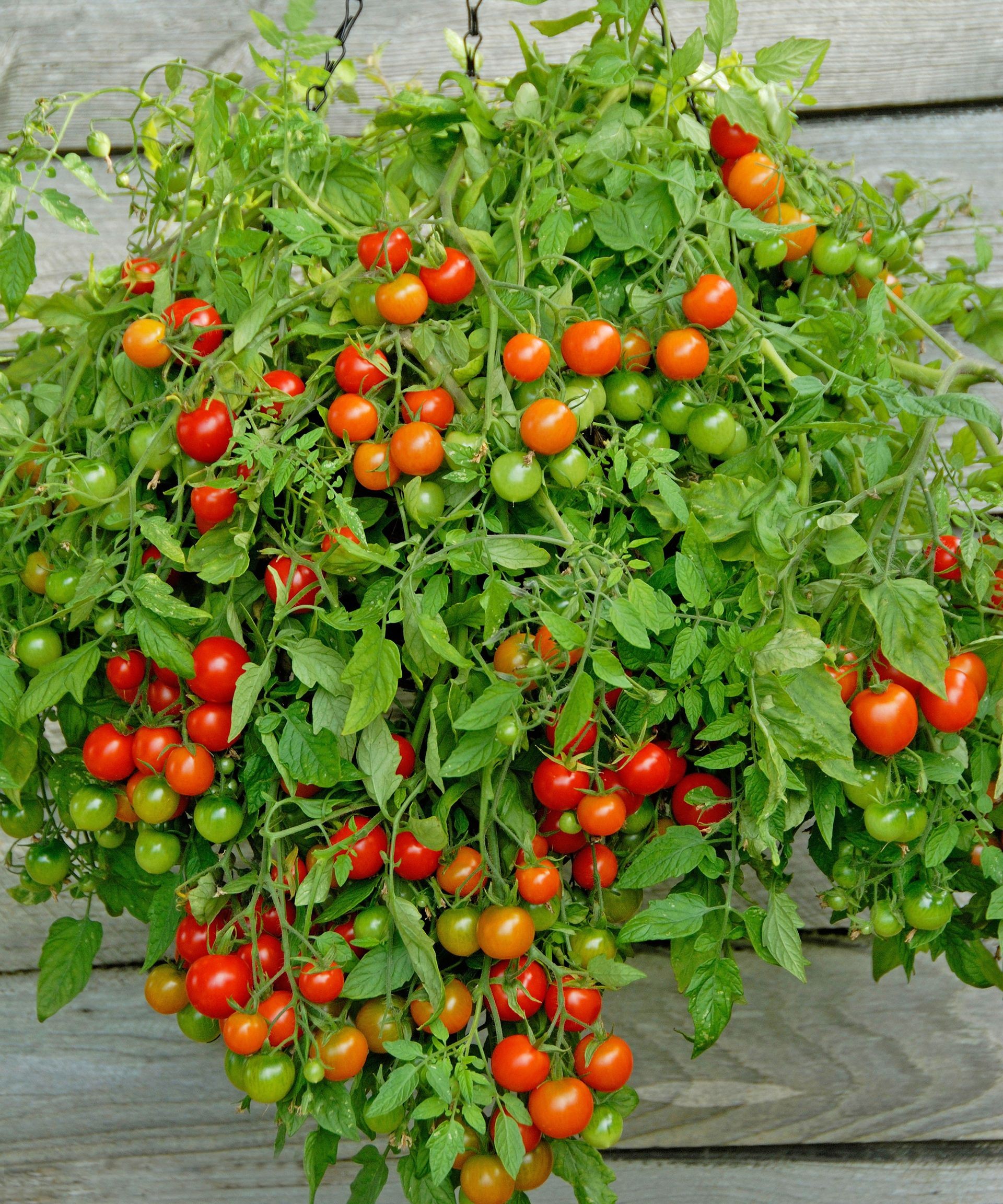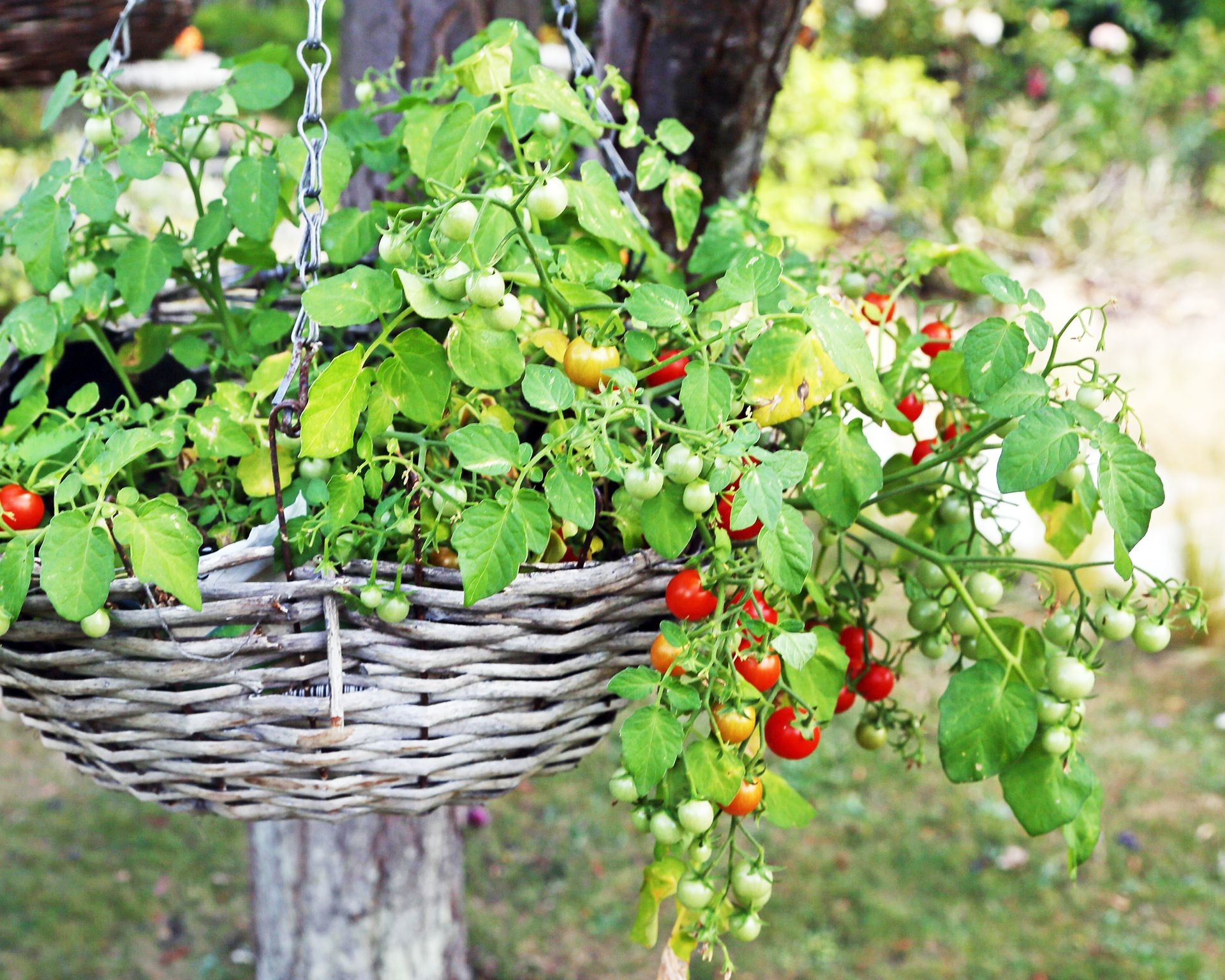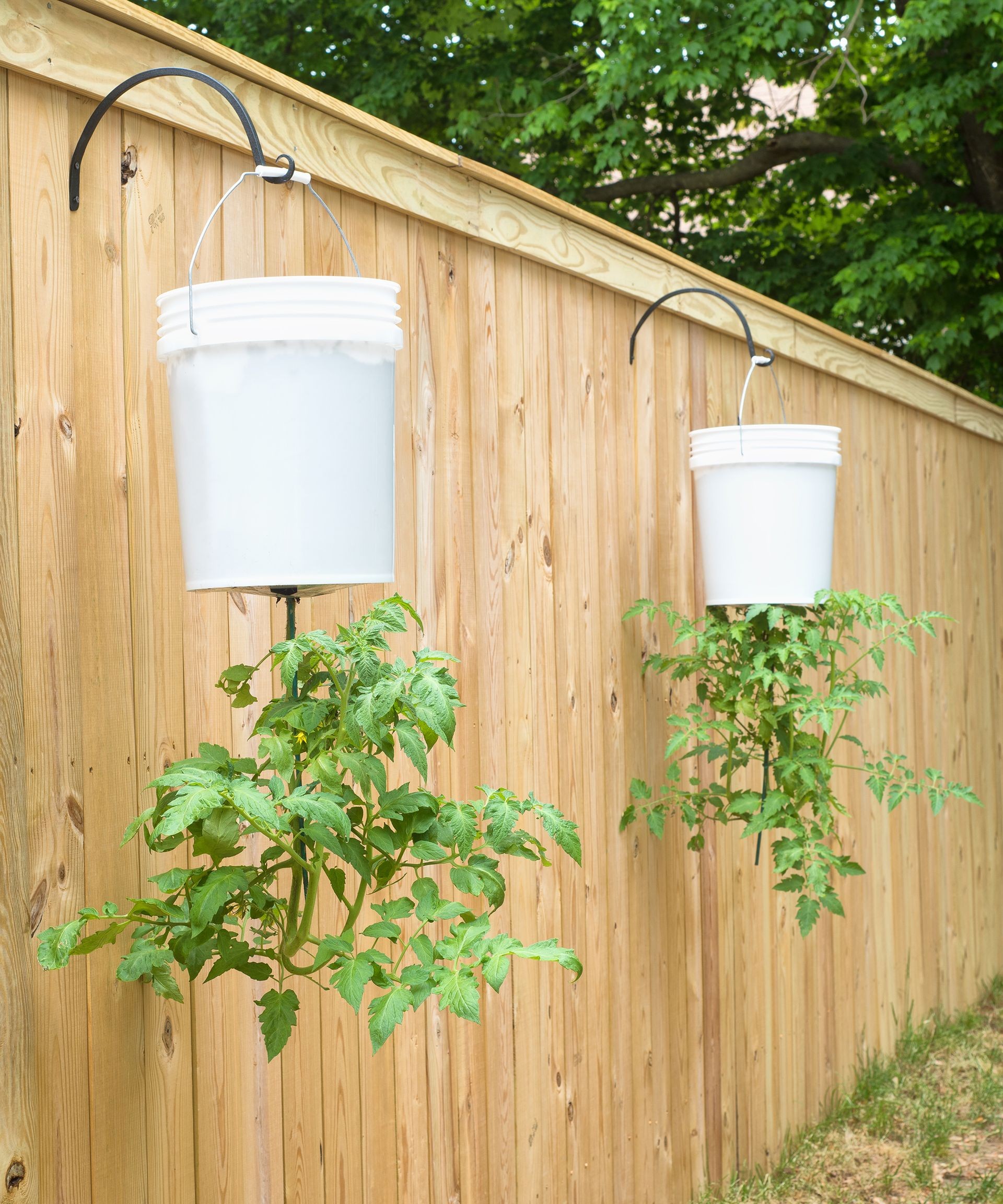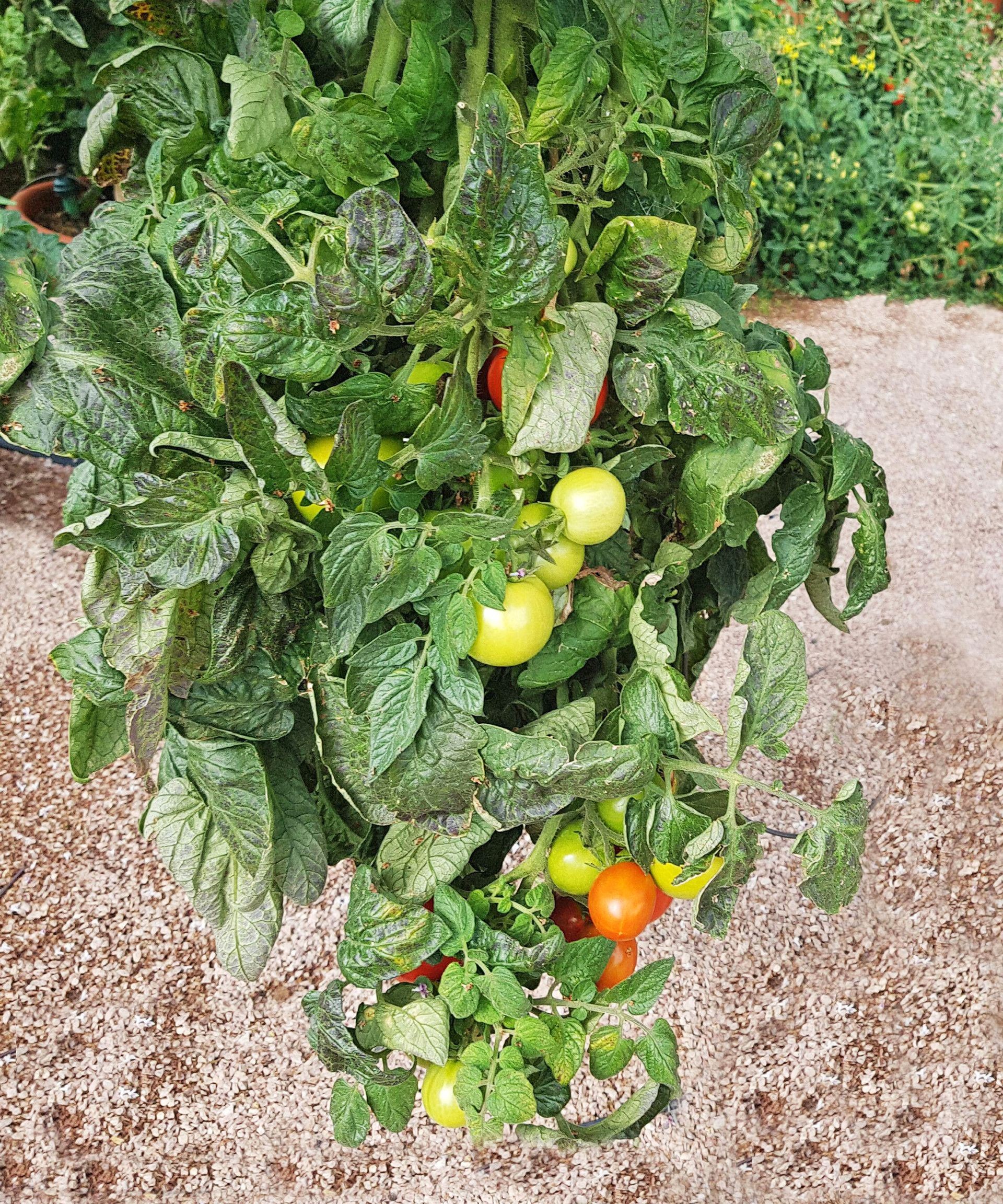No products in the cart.
NEWS
Master the Art of Growing Delicious Tomatoes in Hanging Baskets
Imagine stepping just outside your door and plucking sun-ripened, juicy tomatoes right from a beautiful hanging display. Growing tomatoes in hanging baskets isn’t just a clever way to maximize small spaces; it’s a rewarding method that can simplify care and boost your yield. As experts at Biogarden.Asia, we know the joy of homegrown produce, and hanging baskets offer a fantastic opportunity for both novice and experienced gardeners to cultivate vibrant tomato plants and enjoy fresh fruit throughout the season. This approach is particularly beneficial for urban gardeners, those with limited ground space, or anyone looking for an accessible and attractive way to grow these popular fruits.
The Advantages of Growing Tomatoes in Hanging Baskets
Opting for a hanging basket presents several distinct benefits for tomato cultivation:
- Space Efficiency: This is perhaps the most obvious advantage. Hanging baskets utilize vertical space, making them ideal for balconies, patios, porches, or small garden areas where ground space is limited.
- Reduced Pests and Diseases: Elevating plants off the ground significantly reduces exposure to soil-borne diseases and many common garden pests that reside in the soil. Improved air circulation around the foliage also helps prevent fungal issues.
- Simplified Care: Watering and feeding can often be more targeted. Furthermore, trailing or determinate varieties grown in hanging baskets typically don’t require staking or caging, simplifying structural support.
- Easier Harvesting: Having tomatoes at eye level or slightly below makes picking ripe fruit a breeze, eliminating the need to bend down.
- Aesthetic Appeal: A lush tomato plant overflowing with ripe fruit creates a stunning visual display, adding beauty to your outdoor living space.
 Ripened red cherry tomatoes cascade over the edge of a hanging basket, ready for harvest.
Ripened red cherry tomatoes cascade over the edge of a hanging basket, ready for harvest.
Selecting or Crafting Your Hanging Tomato Container
Choosing the right container is the first step. You can purchase purpose-built hanging baskets made from wire, plastic, or wicker. Wire baskets should always be lined with a material like coir or moss to retain soil. Plastic containers are lightweight and retain moisture well, but dark colors can absorb excessive heat, potentially harming roots. Consider lighter-colored containers if possible.
For a DIY approach, a sturdy bucket can be repurposed. Drill drainage holes in the base. If attempting the popular upside-down method, you’ll need to drill a larger hole in the bottom of the bucket, big enough for the plant’s stem and root ball to pass through gently. Ensure your container has a reliable handle or attach sturdy wire or chain for hanging.
Choosing the Best Tomato Varieties for Hanging
Not all tomato varieties are equally suited for hanging baskets. Given the confined space and the need for the plant and fruit weight to be supported by the basket, smaller, often trailing or determinate varieties are best.
Look for varieties specifically bred for containers or hanging baskets. Excellent choices include most cherry and grape tomato types, as their smaller fruit size reduces the overall load on the plant and basket.
Some popular and effective varieties include:
- ‘Sweet Million’
- ‘Cascade Cherry’
- ‘Tiny Tim’
- ‘Tumbler’
- ‘Cherry Falls’
- ‘Cupid Hybrid’
- ‘Napa Grape’
- ‘Tumbling Tom’
- ‘Midnight Snack’
These smaller types are also often among the easiest tomatoes to grow, adding to the success rate for beginners.
Planting Your Tomato Hanging Basket
Whether you’re planting for traditional upward growth or the upside-down method, the planting process requires careful attention to detail.
For Traditional Growth:
Line your chosen basket if necessary. Fill the container with a high-quality potting mix. A good mix should be lightweight and retain moisture while allowing drainage. Incorporating vermiculite or perlite can improve moisture retention and aeration. A blend of good potting soil mixed with compost (perhaps a 50/50 ratio) provides essential nutrients and improves soil structure. Gently remove your tomato seedling from its nursery pot, carefully loosening any circling roots. Dig a hole large enough to accommodate the root ball comfortably. Position the plant, backfill with soil, pressing gently to remove air pockets. Water thoroughly to settle the soil around the roots.
For Upside-Down Growth:
This method involves planting the tomato through the bottom of the container. Gently guide the seedling’s root ball and stem through the prepared hole in the base of your bucket or specific upside-down planter, ensuring the foliage hangs downwards. From the inside of the container, spread the roots out within the bucket’s cavity. Fill the container with your potting mix, ensuring the roots are covered and the soil is settled around the base of the stem inside the bucket. Water thoroughly from the top of the bucket.
 A vibrant green tomato plant thrives in a hanging basket filled with soil, showcasing healthy foliage and potential.
A vibrant green tomato plant thrives in a hanging basket filled with soil, showcasing healthy foliage and potential.
Securing Your Hanging Basket and Location
Tomato plants, especially once laden with fruit and wet soil, can become quite heavy. It is crucial to use strong, reliable hardware for hanging. Secure hooks or brackets firmly into sturdy structures like wall studs, solid eaves, or robust tree branches using appropriate anchors. Using chains for hanging can provide extra strength and flexibility.
Location is key for successful tomato growth. Tomatoes are sun-lovers and need at least 6-8 hours of direct sunlight daily. Choose a spot that receives maximum sun exposure. In very hot climates, a location that gets some dappled shade during the intense afternoon heat can help prevent the plants from becoming stressed and drying out too quickly. In more temperate regions, full sun throughout the day is ideal.
Caring for Your Hanging Basket Tomatoes
Hanging baskets dry out much faster than in-ground gardens or even larger pots, primarily because the container sides are exposed to air and sun. Consistent watering is vital. Check the soil moisture daily, especially during warm or windy weather. Water deeply until water runs from the drainage holes. Watering in the morning is generally best, allowing the plant to hydrate before the heat of the day. You may need to check again in the afternoon and potentially water twice daily during peak summer heat.
Fertilizing is also critical as nutrients in the limited soil volume will be depleted. Incorporate a slow-release granular fertilizer into the potting mix at planting time according to product instructions. Alternatively, use a liquid fertilizer formulated for tomatoes or flowering/fruiting plants every 2-3 weeks, again following application rates carefully. Calcium deficiency can lead to blossom end rot (BER); using a fertilizer with added calcium or supplementing if BER appears can help.
Pinching out the tips of young plants can encourage bushier growth, leading to more flowers and ultimately more fruit. For determinate varieties in hanging baskets, this is less crucial as their growth habit is already more compact.
Considerations for Upside-Down Growing
Growing tomatoes upside down can be intriguing, but it comes with unique challenges. Plants naturally want to grow upwards towards the light, so the stem will curve significantly, potentially weakening over time. Choosing indeterminate varieties for upside-down planters might seem counterintuitive (as they grow larger), but their stems tend to be less rigid and more flexible, potentially handling the curve better than brittle determinate stems. However, the extra weight of an indeterminate variety requires an even stronger hanging support.
As with traditional hanging baskets, upside-down planters dry out extremely quickly. Daily, often twice-daily, watering is essential. Adding a layer of mulch to the top of the soil (which is the bottom of the bucket) can help conserve moisture. Lining the interior of the bucket with landscape fabric or coir before adding soil can also aid in moisture retention.
 Tomato plants growing downwards from inverted buckets hung outdoors, showcasing the upside-down method.
Tomato plants growing downwards from inverted buckets hung outdoors, showcasing the upside-down method. Close-up of a tomato plant stem emerging from the bottom of an upside-down hanging container, curving upwards towards sunlight.
Close-up of a tomato plant stem emerging from the bottom of an upside-down hanging container, curving upwards towards sunlight.
Conclusion
Growing tomatoes in hanging baskets is a rewarding and space-saving technique that brings fresh, delicious produce within easy reach. By selecting the right varieties, providing sturdy support, using quality soil, and maintaining consistent watering and feeding, you can enjoy a bountiful harvest even in limited spaces. Whether you choose the traditional cascading basket or the innovative upside-down method, the principles of good care remain key to success.
Ready to start your hanging tomato garden? Explore the range of high-quality potting mixes, organic fertilizers, and gardening supplies available at Biogarden.Asia to give your plants the best possible start. Share your hanging basket tomato success stories with us!



